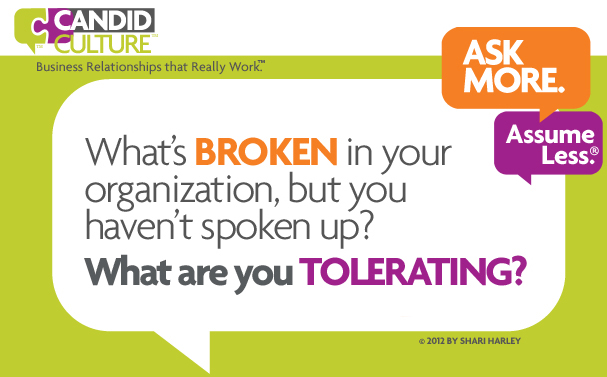It’s not unusual to ask who is at fault when mistakes in an organization are made. We want to know who was to blame. Before asking who is accountable for a mistake, I’d ask what lead to the mistake. Was the error a people or a process issue?
If a document with mistakes is shared with people outside of an organization, there is a process issue.
Yes, someone made a mistake. Someone wasn’t careful or knowledgeable enough to catch the error. But if a document’s accuracy is important, more than one person should be looking at that document before it leaves the organization. When only one person looks at an important document, there is a process issue.
Processes include: The practices followed and the tools used when creating, proofreading, saving, and storing work.

William Ury, author of the negotiation books Getting to Yes and Getting Past No, said, “Be easy on the people and hard on the process.” When mistakes happen, evaluate the processes surrounding that work. What allowed the mistake to go out the door unchecked? Would a different process with more checks and balances and more eyes on the work have prevented the error?
After evaluating the processes or lack thereof, coach the person who made the mistake. Fill the gap that allowed the mistake to happen, but first, evaluate your processes.

There are things in our lives that bug us, but we put up with them. They’re often little things like a burned out light bulb or a messy drawer in which we dump stuff that doesn’t have a real home. Maybe the bulb has been out or the drawer has been a mess for so long that we no longer even notice it.
Our workplace isn’t any different. There are things in your organization you’re tolerating. Perhaps a process or software is inefficient, but you don’t say anything to the people in your organization who can do something about it. Or maybe you said something a few times, but you didn’t feel anyone listened and you gave up.
Organizations are comprised of doers and leaders. And organizations need both. If everyone wants to lead, you’ll have trouble. If no one leads, you’ll have even more trouble. Doers keep things going from day-to-day. Leaders create opportunities, fix problems, and upgrade existing conditions.
I’m often asked to coach managers in organizations. The coachees’ boss tells me, “He’s a great employee. But if he wants to move up in this organization, he needs to be a leader.” And more often than not, the employee is confused by what the manager wants. Coachees say things like, “I give my opinion in meetings. I volunteer for stuff. What else does my boss want?”
I tell my coachees the most straightforward thing I know to transition from a doer to a leader –improve processes and look for opportunities to fix things that are broken.

Want to know how to become a leader in an organization? Ask these questions regularly:
- What in the organization frustrates people? What could we do differently to ease people’s frustration?
- Where do we have mediocre results? What’s the breakdown?
- Where are we wasting money? Where are our costs too high? Where are we losing revenue?
- What processes take longer than they need to? Or where is there a lack of process?
- Where do we have inefficiencies and redundancies?
- What practices work in one department that could work in another?
Leaders in organizations are always looking for ways to make things better. They look for opportunities and (picking their battles) pursue solutions. Pursuing a potential change does not mean asking your boss or department leader once or twice. It means telling someone in a position of formal authority about a missed opportunity, asking permission to make a change, and then doing the work required to make it happen. Leaders do not tell their boss about a problem and walk away. Leaders suggest and implement a solution.





